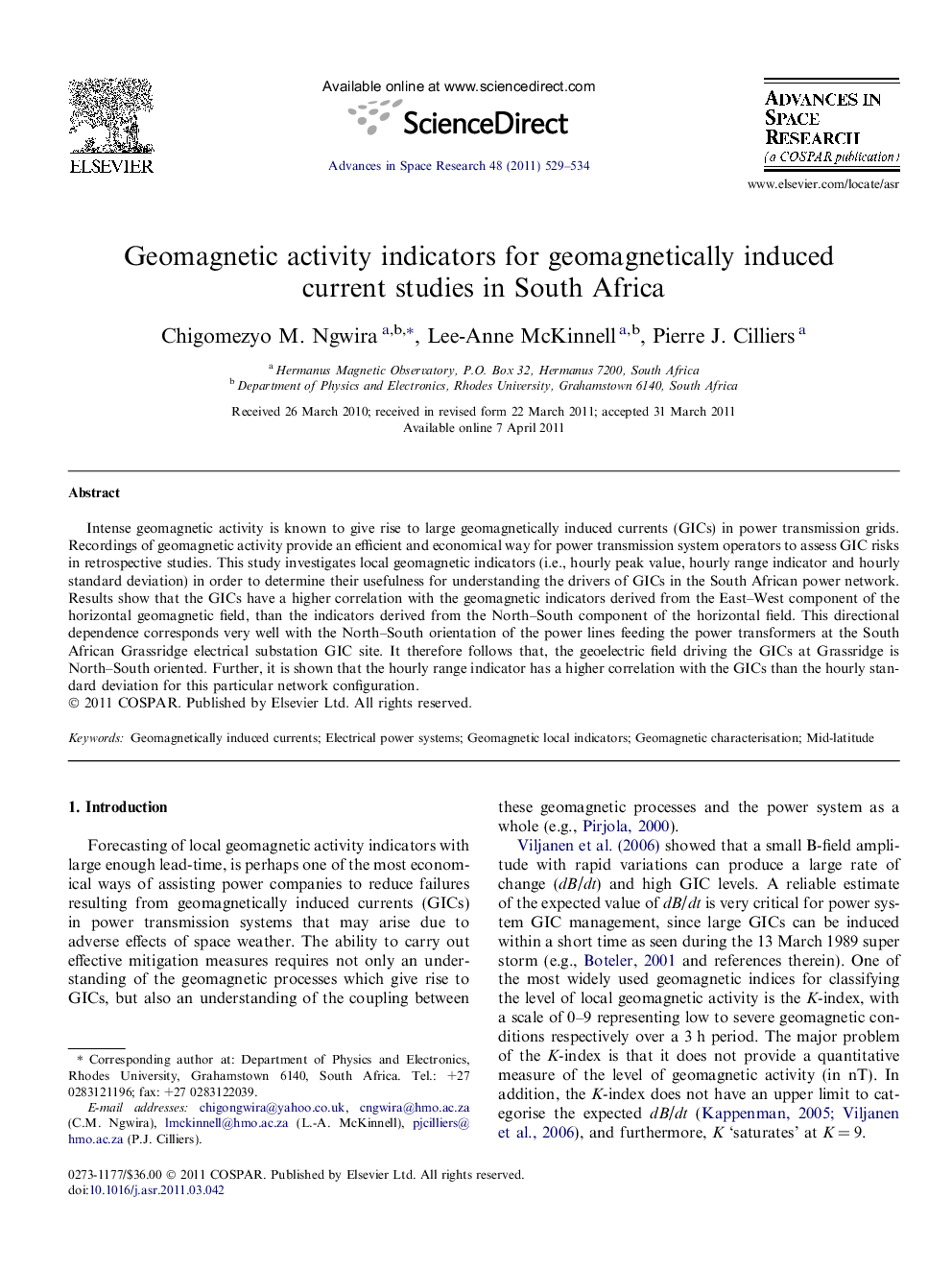| Article ID | Journal | Published Year | Pages | File Type |
|---|---|---|---|---|
| 1766491 | Advances in Space Research | 2011 | 6 Pages |
Intense geomagnetic activity is known to give rise to large geomagnetically induced currents (GICs) in power transmission grids. Recordings of geomagnetic activity provide an efficient and economical way for power transmission system operators to assess GIC risks in retrospective studies. This study investigates local geomagnetic indicators (i.e., hourly peak value, hourly range indicator and hourly standard deviation) in order to determine their usefulness for understanding the drivers of GICs in the South African power network. Results show that the GICs have a higher correlation with the geomagnetic indicators derived from the East–West component of the horizontal geomagnetic field, than the indicators derived from the North–South component of the horizontal field. This directional dependence corresponds very well with the North–South orientation of the power lines feeding the power transformers at the South African Grassridge electrical substation GIC site. It therefore follows that, the geoelectric field driving the GICs at Grassridge is North–South oriented. Further, it is shown that the hourly range indicator has a higher correlation with the GICs than the hourly standard deviation for this particular network configuration.
